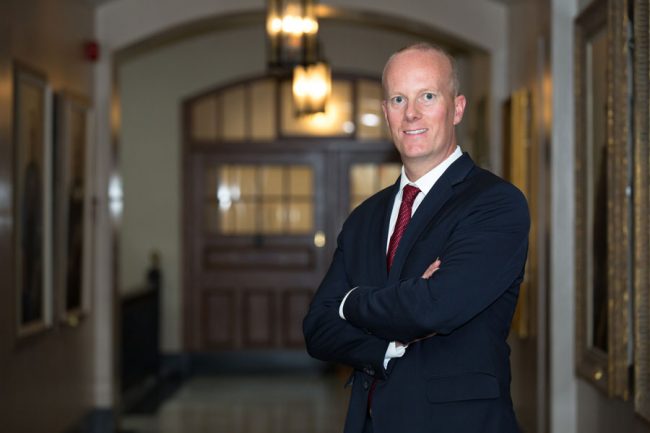
May 26, 2020
Tyler Irving
ECE Professor Ted Sargent has received this year’s Killam Prize for Engineering.
“This honour means a lot to me, especially when I consider all of the inspiring researchers who have held it in years past,” says Sargent. “What this award celebrates is a truly global collaboration with talented researchers dedicated to building a cleaner, more sustainable world. I see it as a celebration of the remarkably talented students and fellows whom I’ve had the privilege of working with in the past two decades as a faculty member in Engineering at U of T.”
Awarded by the Canada Council for the Arts, the Killam Prizes celebrate working scientists, writers, doctors and researchers who have dedicated their careers to solving challenges in our daily lives. Also among this year’s recipients is Professor Barbara Sherwood Lollar (Earth Sciences).
The Killam Prizes are awarded at the same time as the Killam Research Fellowships, which support outstanding scholars as they carry out their groundbreaking projects in a wide range of fields. Professor Milica Radisic (IBBME, ChemE) and Professor Joseph Heath (Philosophy) are among this year’s recipients.
Read more about Milica Radisic’s Killam Research Fellowship
Sargent holds the Canada Research Chair in Nanotechnology, and leads a large research lab dedicated to advanced materials such as quantum dots, perovskite crystals and multi-metal catalysts. Applications include light sensing, solar energy harvesting, and carbon capture and storage.
The Sargent group has set a number of world records in the use of colloidal quantum dots (CQDs) to harvest solar energy. They also designed highly efficient CQD light sensors, a technology that was spun off into the startup InVisage Technologies.
Another line of materials research relates to perovskites, which like CQDs can convert sunlight into electricity. Both CQDs and perovskites can be mixed with liquid to create a “solar ink” that could be used with established technology such as inkjet printers. This manufacturing approach, known as solution processing, could significantly lower the cost of solar cells.
Last month, Sargent and his collaborators reported a new type of tandem solar cell, in which they combined perovskites with traditional silicon solar cells, enabling them to overcome key limitations of the existing technology.
The Sargent lab has also extensively researched the use of electrolyzers — devices in which electricity powers a chemical reaction — to convert CO2 into common industrial chemicals. This strategy improves the economics of carbon capture and storage by raising the value of captured CO2, while at the same time reducing the need for fossil fuels in the petrochemical industry. As an added bonus, it also provides an outlet for excess electricity from renewable but intermittent sources such as solar or wind power.
Several researchers from the Sargent group have formed a spinoff company, CERT Technologies Inc., to commercialize this research. Last month, CERT was among the winners of the Breakthrough Energy Solutions Canada competition. It is also one of five finalists in the NRG COSIA Carbon XPRIZE, a $20 million competition to design technologies to upgrade CO2 into valuable products.
Read more about recent research from Professor Ted Sargent’s lab group
Sargent serves as Vice-President, International for the University of Toronto. In this role, he is responsible for strengthening and expanding U of T’s global networks. This includes forming research partnerships with peer institutions and leading companies worldwide as well as expanding opportunities for students to participate in study abroad programs, work-integrated learning placements and other global experiences.
Sargent’s research has received more than 37,000 citations, with more than 100 of his papers cited more than 100 times. He is a Fellow of the Royal Society of Canada, the American Association for the Advancement of Science, and the Canadian Academy of Engineering. In addition to InVisage and CERT, he has co-founded two more startup companies: QD Solar and Xagenic. His book The Dance of Molecules: How Nanotechnology is Changing Our Lives (Penguin) was published in Canada and the United States in 2005.
“Congratulations to Professor Sargent on this well-deserved honour,” said Chris Yip, Dean of the Faculty of Applied Science & Engineering. “His research impact is truly inspiring, as are his dedication to strengthening our institution’s global connections and enriching our entrepreneurship ecosystem. He embodies the spirit of excellence that characterizes our Faculty.”
This story originally appeared on U of T Engineering News.
More information:
Jessica MacInnis
External Relations Manager
The Edward S. Rogers Sr. Department of Electrical & Computer Engineering
416-978-7997; jessica.macinnis@utoronto.ca